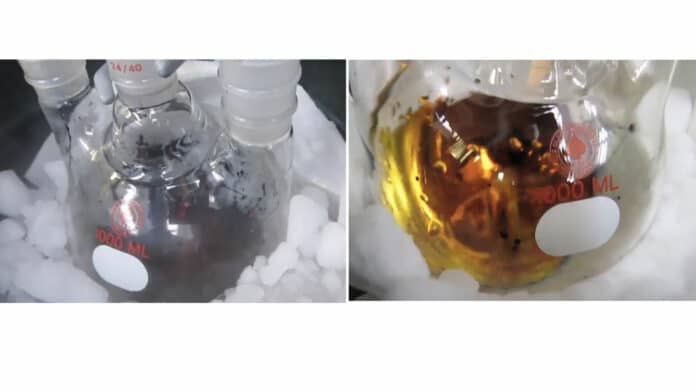Scientists have several theories about solvated dielectrons, but they have never made a direct observation of one. They are a pair of dissolved electrons in liquids like water or liquid ammonia. The two electrons inhabit a hollow that forms in the liquid to create room for them.
An international research team has now discovered the solvated dielectron’s formation and decay process. The consortium discovered direct evidence, backed by quantum chemical calculations, for creating these electron pairs by excitation with ultraviolet light in tiny ammonia droplets containing a single sodium atom in studies at the synchrotron SOLEIL (DESIRS beamline).
The formation of dielectrons leaves traces in an unusual process. This process has been observed by scientists for the first time. One of the two electrons moves to the nearby solvent molecules during this process, while the other electron is released at the same time.
Surprisingly, similar processes have been observed previously at much higher excitation energies. The group focused on the second electron since it might have useful applications. The ejected electron goes very slowly because, on the one hand, it has a very low kinetic energy when it is created. On the other hand, the irradiated UV light, which initiates the entire process, can govern this energy. Therefore, solvated dielectrons might be a reliable supply of low-energy electrons.
Many different chemical processes can be initiated by such slowly moving electrons. For instance, they contribute to events that cause radiation damage to biological tissue. They are also crucial in synthetic chemistry because they work well as reducing agents.
Future work will focus on the mechanisms of such chemical reactions by selectively generating slow electrons with varying energy. Additionally, the controlled energy made accessible to the electrons could be utilized to improve the efficiency of reduction reactions.
Hartweg said, “These are interesting prospects for possible applications in the future. Our work provides the basis for this and helps to understand these exotic and still enigmatic solvated dielectrons a little better.”
This study is performed around Dr. Sebastian Hartweg at the Institute of Physics at the University of Freiburg and Prof. Dr. Ruth Signorell from ETH Zurich in collaboration with scientists from the synchrotron SOLEIL and Auburn University (US).
Journal Reference:
- Sebastian Hartweg, Jonathan Barnes, Bruce Yoder et al. Solvated dielectrons from optical excitation: An effective source of low-energy electrons. Science. DOI: 10.1126/science.adh0184
